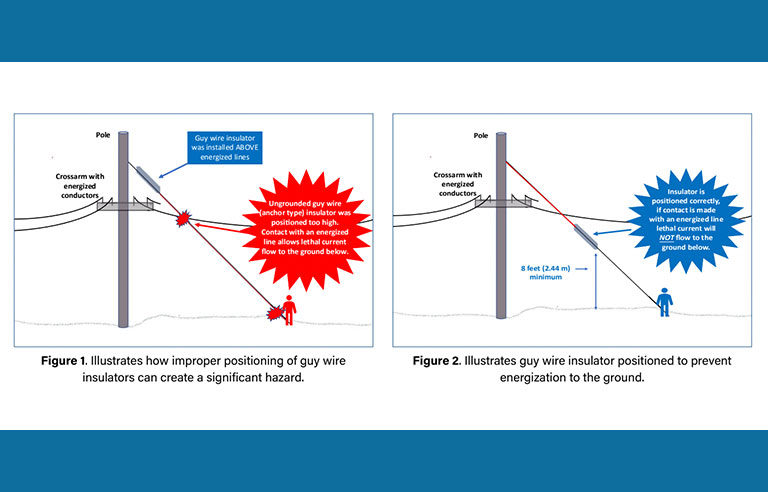Guy wires and power lines can be a deadly mix, OSHA warns

Washington — Spurred by a number of deaths in which a guy wire being worked on contacted an energized high-voltage power line, OSHA has issued a hazard alert.
In some of the cases, OSHA says its investigations revealed that the guy wires “weren’t grounded and had insulators positioned incorrectly.”
Guy wires are installed on poles for support. According to the agency, workers on the ground can be exposed to electrical hazards when:
- Installing a new guy wire on a pole with energized lines.
- Adjusting the tension to remove slack from a guy wire.
- Replacing a guy wire after an incident or natural disaster.
“To protect employees, guy wires must be either effectively grounded or have properly positioned insulators to block the flow of electric current,” OSHA says.
The alert features illustrations on proper and improper positioning of insulation on guy wires.
“OSHA recommends employers follow relevant guidelines in consensus standards, such as the National Electrical Safety Code (IEEE, NESC-C2), which recommends ungrounded guy wires have insulators installed to prevent electric current from traveling down the guy wire to below 8 feet above the ground level,” the alert states.
Post a comment to this article
Safety+Health welcomes comments that promote respectful dialogue. Please stay on topic. Comments that contain personal attacks, profanity or abusive language – or those aggressively promoting products or services – will be removed. We reserve the right to determine which comments violate our comment policy. (Anonymous comments are welcome; merely skip the “name” field in the comment box. An email address is required but will not be included with your comment.)

